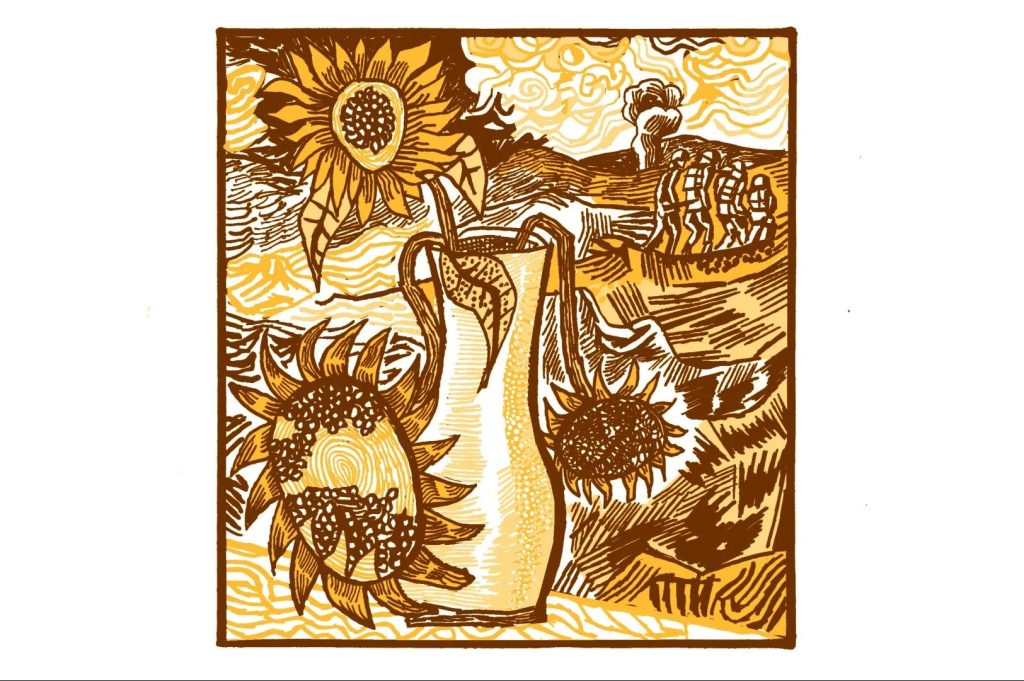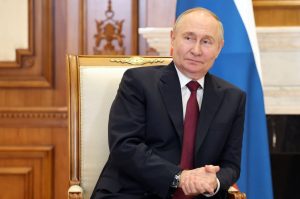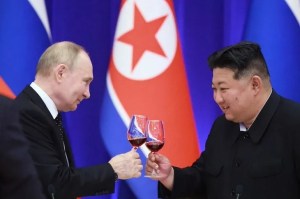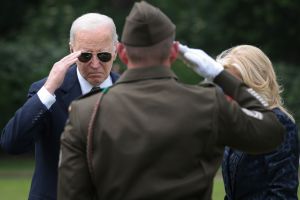Lviv, Ukraine
I arrive at Lviv station just before 9 am. As the clock strikes, the conductor announces a minute’s silence: a daily commemoration for those who have fallen in the war. But it’s observed only by the railway staff, who stand up to bow their heads. The passengers just carry on. After all, isn’t part of the resistance to carry on life as normal, despite the war? This was the idea at first, but soldiers at the front line have come to resent the chasm between those who are fighting and those who don’t want to have any part in the war. It’s just one of many ways in which, returning to Ukraine, I can see the Russian invasion reshaping my country.
Coming home to my village in the west of Ukraine, I see how the war is draining the life out of it. Although it has never come under Russian occupation, the streets are all but deserted. There’s only a handful of children and pensioners around. Men of fighting age are conspicuous by their absence. It’s a reminder that conscription hits villages harder than cities, where men can more easily avoid the draft because they are more valuable to the wartime economy. The cemetery has expanded. The soldiers’ graves are easy to identify: they have flags next to them, and so many flowers that you can’t see the ground. In the village center, the faces of the fallen are depicted on 6ft-high banners. I recognize at least half of them. Some say that the cost of such memorials would be better spent on drones, but I disagree. The faces remind those of us far from the front line that the war keeps taking its toll. I see a bereaved mother pouring water into a vase under the picture of her son. She leaves fresh flowers and just stands there, looking at his face. I feel too ashamed to approach her. What is there to say? That I am sorry for his death? That I’m grateful for his sacrifice? That we danced once, when I had just turned seventeen?
The remaining men in my village seldom leave their houses. I soon see why, as a white van with conscription officers races after a man on a bicycle. He escapes by veering between the garages. If he were on foot, he wouldn’t have been so fortunate. Later I meet a woman who cries that it is “better to have ten daughters than one son.” Both of her sons are of draft age. Men over sixty who are too old to enlist have been offered work in a kind of Dad’s Army. They are paid around $250 a week (about four times the monthly state pension) to dig trenches, the second and third lines of defense if Russian troops come closer. As evening falls, many houses in my village are in darkness: only a few have even a single room lit. Russian missile strikes have destroyed most of the power plants. Some people say they don’t mind the daily power cuts, as it means cheaper bills. I suspect this feeling will vanish with the first frost.
I reach Kyiv to find it full of life with crowds enjoying the summer heat. Russian forces now rarely waste their missiles on shelling the most protected city in Ukraine, since most are shot down by our air defenses. The capital feels safe and serene until you look at the field of thousands of little flags on Maidan Square, each one representing a life lost in the war. A funeral procession passes: a car moving slowly along the central street, the coffin within covered by a yellow-and-blue flag. “Dmytro, take a look at how the capital greets you,” says a soldier into a loudspeaker, addressing his fallen friend. “Look how they ‘honor’ your sacrifice. They don’t even pay some respect! Girl on the scooter, why don’t you stop? Man near the store, why do you turn your back? Watch, my friend. Who did you die for?”
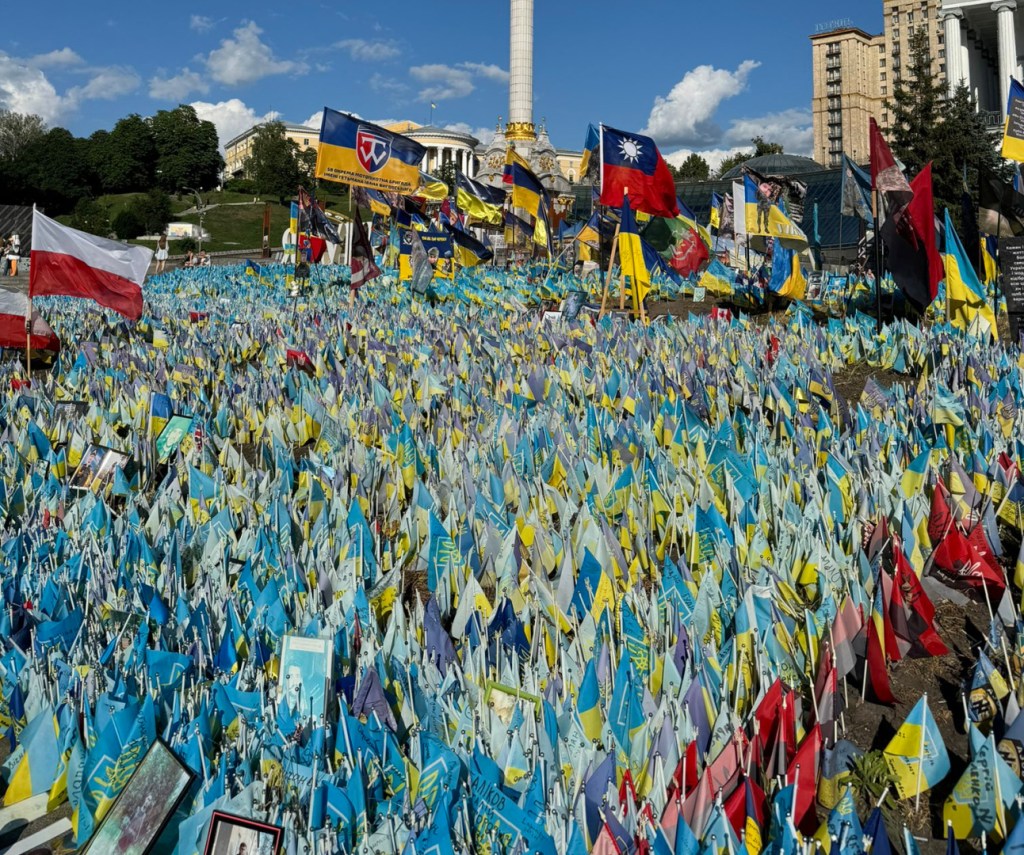
The further east I travel, the more real the war feels. Roads are blocked by checkpoints with guards on the lookout for saboteurs. When I reach Kharkiv, nineteen miles from the Russian border, air-raid alerts are almost constant. This month alone, 700 guided aerial bombs have been dropped on the region, but fewer missiles since the US authorized the Ukrainian army to strike Russian positions across the border. Many residents sleep in their bathrooms or corridors, following the “two-wall” rule for safety (always keep two walls between you and the street during attacks, in case the outer one collapses). I had planned to sleep in a bathtub, which offers side protection in case of explosions, but my hotel room doesn’t have one. Going to a bomb shelter would mean spending all night there, so I opt for the comfortable bed and simply hope to wake up in the morning.
I take the bus to Pechenihy, a village an hour to the east, and see a woman buy tickets for five soldiers. “A small thank-you for protection from enemies,” she says. The soldiers become shy. Another woman talks on her phone, trying to calm someone down: “Shrapnel hit the car, but I promise, they are OK. Medics are taking care of them.”
Pechenihy’s center has a few stores, a café and a church, and is probably the last semblance of civilization before we reach the warzone. There are dozens of soldiers here — they come to buy cigarettes and find a decent internet signal. I hitch a ride north with some of them and we pass blown-up bridges, sunflower fields and anti-tank trenches. We stop two miles from Russia’s border. I flinch at the sound of an explosion and see a cloud of black smoke go up ahead of me. The front line starts here.
This article was originally published in The Spectator’s UK magazine. Subscribe to the World edition here.



